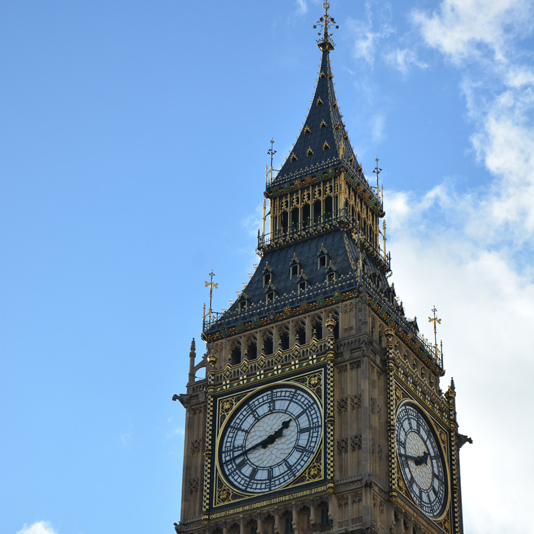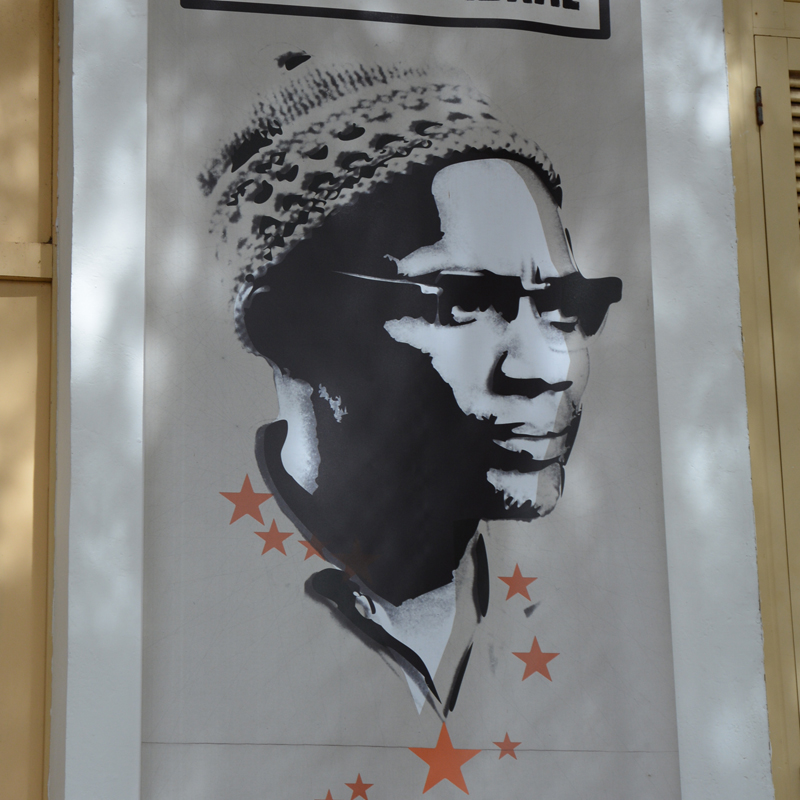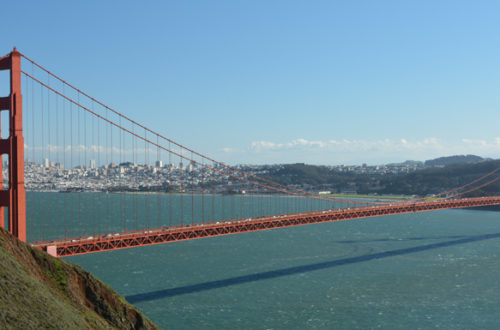
Jamaica: the unexpected language barrier of Jamaican Patois
Full photo album for Jamaica.
Thursday 1 – Sunday 11 December 2016.
Two weeks into my journey I was becoming tired of being constantly on the move, and was looking forward to getting to Jamaica where I was in one place for ten days.
But first I needed to catch a flight from São Vicente to Santiago. Wait four hours, depart at 2am for Lisbon, wait 4 more hours then fly to Miami. Total flying and transit time was 24 hours, and I’d been up 12 hours before embarking on this leg of the journey, so at least 36 hours. Hmm, no wonder my sleep patterns were out of whack.
In Miami I felt like the stereotypical college student, coming home over the weekend to get my washing done. Being mindful of water conservation in Cape Verde and Jamaica, I packed so washing was done in Miami. By the time I crawled into bed I had beautiful clean clothes.
I love Jamaica. My hosts Val and her mother Lorna are so warm and welcoming. They made Jamaica feel like home.
My first full day in Jamaica was trying to work out how to get around, what tours to do, where to go to find info on my ancestor etc. I wasn’t sure about public transport and was advised to use local taxis.
Saturday I got a taxi into town and walked along the waterfront. The area was practically deserted. I found my way to the National Gallery of Jamaica and took my time wandering through the exhibits. My favourite painting is by Barrington Watson, “Mother and Child.” It was at the top of the stairs and I stood in front of it for some time. Other exhibits gave me more of an insight into some of Jamaica’s history.
I had lunch there before heading off to explore further. I went to the Kingston Craft Market that had little to no tourists, and was mainly selling kitschy items, not really the types of things I’d buy.
Kingston City Explorer Tour
Sunday’s tour was with Karen Hutchinson from Jamaica Cultural Enterprises. First stop was to Life Yard, a multicultural, intergenerational eco-village on Fleet Street. It was started by 15 men all under the age of 40. Their intention is to not let crime and violence be their future.

At Life Yard the group farm, make furniture and run their own restaurant, Life Yard Vegan & Vegetarian, using food grown there. The centre is where they teach inner-city kids how to become farmers themselves.
There is a diversity of skills within the group: chefs, engineers, farmers and so on. Their aim is to do what they can to make the project a success.
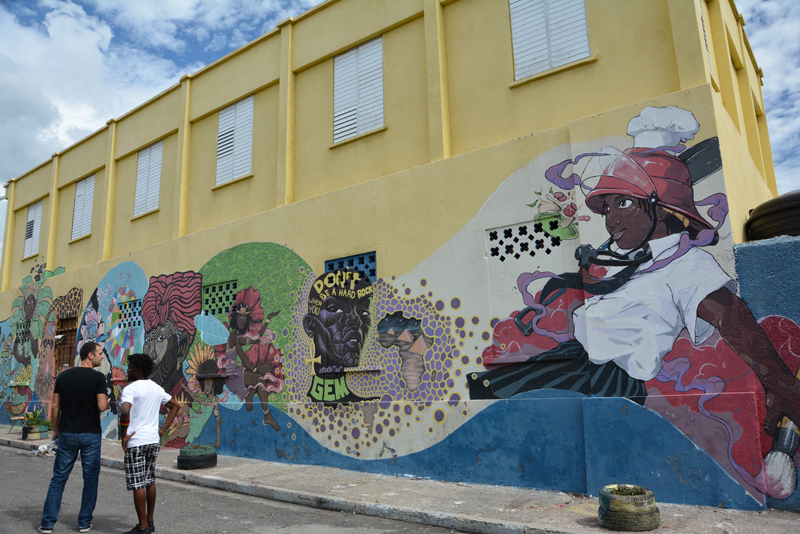
Paint Jamaica and Plant Jamaica’s aim is to transform communities in downtown Kingston with art and nature. Both have helped the Life Yard team with advice to make their project a success. It is rewarding when parents from surrounding communities send their children to the village to learn.
Paint Jamaica started when founder, Marianna Farag, saw the abandoned warehouse and local school fence and was inspired to beautify the area. It was a collective effort of local and visiting artists. Residents of Fleet Street were interviewed by the artists to hear the aspirations of the neighbourhood. What changes did they want? What images did they want to see? What stories did they want to tell?
The art created a unity and improved the self esteem of the residents. From the initial start they continued to other buildings.
After a tour of the art, we sat down to a fantastic vegan meal, including ackee.
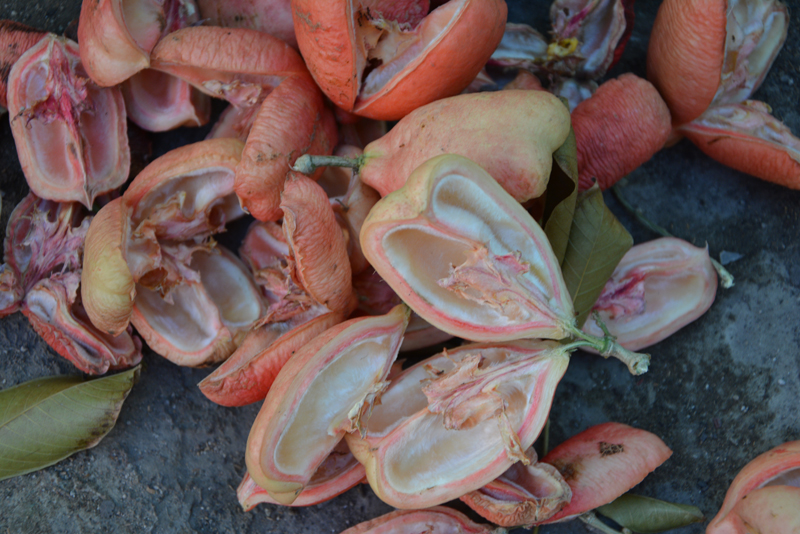
Ackee is a tree growing fruit, and while found throughout the Caribbean, is mainly eaten in Jamaica. Only the aril from ripe fruit that has naturally split open is eaten. The aril is prepared by stripping out all red fibre and boiled to remove any residual toxicity. Our meal also has lentils, vegetables, rice and salad. I managed to eat the whole plate.
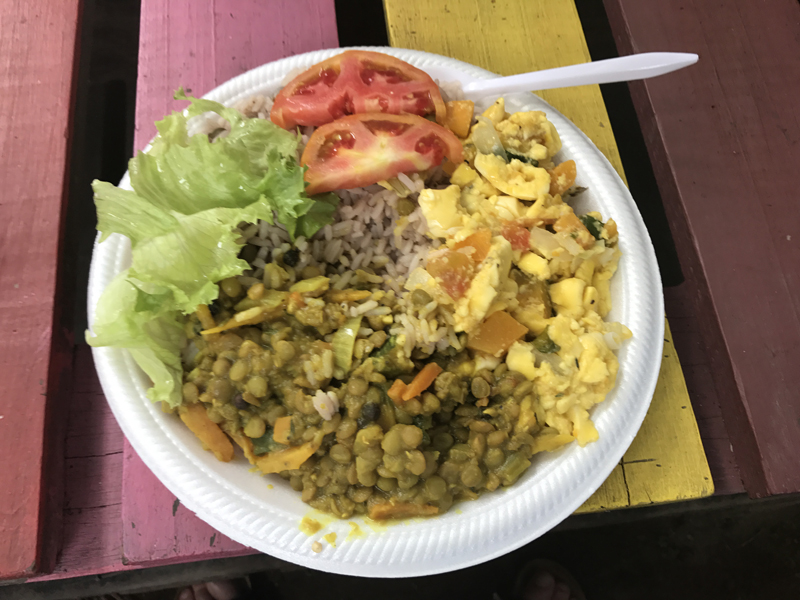
Next was Trench Town Culture Yard Museum, a National Heritage Site. It is the birthplace of rocksteady and reggae music. The neighborhood gets its name from its previous designation as Trench Pen, 400 acres (162 hectares) of land once used for livestock by Daniel Power Trench, an Irish immigrant of the 18th century. The Trench family abandoned the land in the late 19th century.
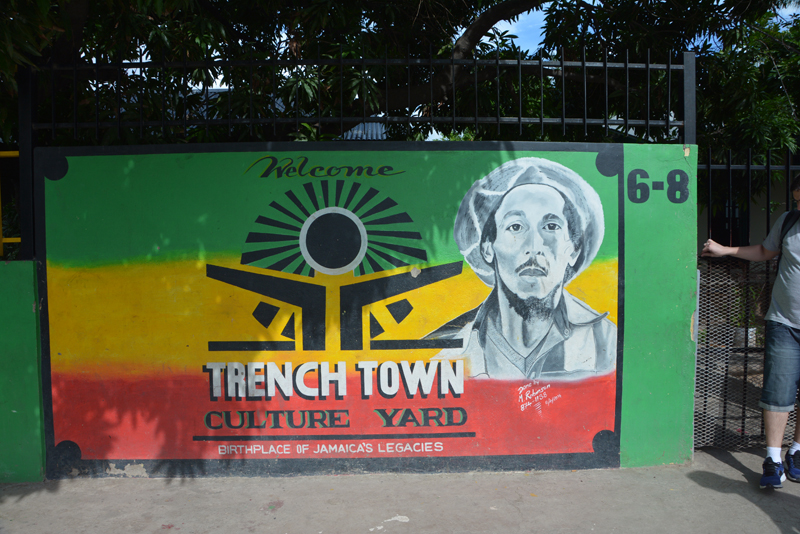
It was the home of: reggae and Rastafari ambassador Bob Marley (who left Nine Mile with his mother when he was 12 and moved to Trench Town); Vincent ‘Tarta’ Ford (who taught Bob Marley how to play the guitar and wrote the song “No Woman No Cry”); Joe Higgs (The Father of Reggae); Alton Ellis (one of Jamaica’s first singers); Peter Tosh; Bunny Wailer and many more.
The residences consisted of ‘knog’ buildings, built in clusters or around a central courtyard with communal cooking and bathroom facilities. Knog construction is where a timber frame structure is in-filled with brick or rubble then covered with a wire mesh and plastered.
From Trench Town we wandered through the food market but didn’t take photos and Karen warned us to not have any valuables on us, to stay safe. From there we travelled to the National Heroes Park to watch the changing of the guard.
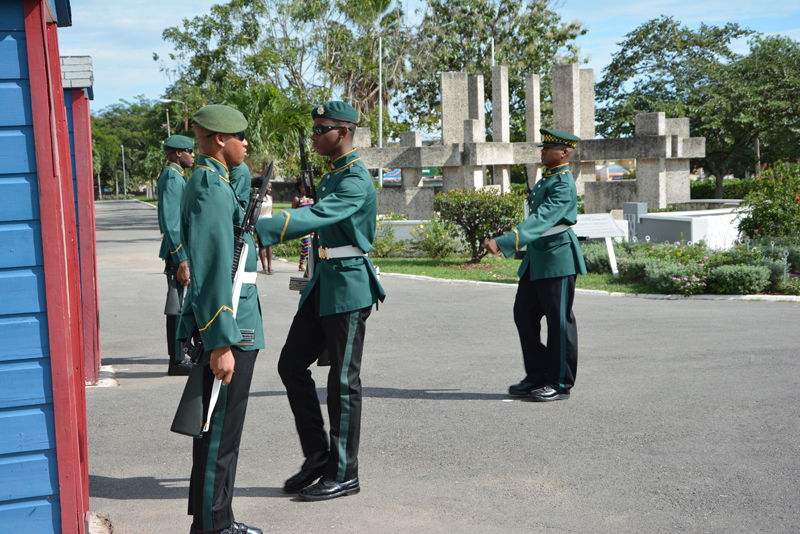
National Heroes Park: The Jamaica War Memorial is a cenotaph honouring Jamaicans killed in combat during World Wars I and II. Constructed in 1922 it was initially located on Church Street in downtown Kingston, but moved to its present location in 1953. It is topped by a cross weighing one and a half tons.
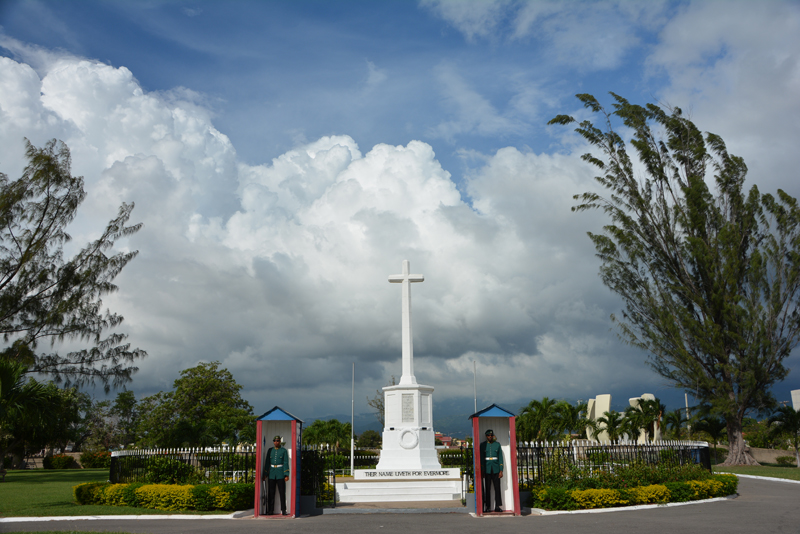
For more detail on each of the following monuments, see the photo gallery.
This is final resting place of a few national heroes, including:
Norman Manley (1893-1969).
Advocated as a barrister to assist workers during the labour troubles of 1938. Co-founded the People’s National Party, worked for Universal Adult Suffrage. Became Chief Minister of Jamaica in 1955, working towards Jamaica’s independence. In the end he became the Leader of the Opposition instead of Jamaica’s first Prime Minister, losing to Bustamante.
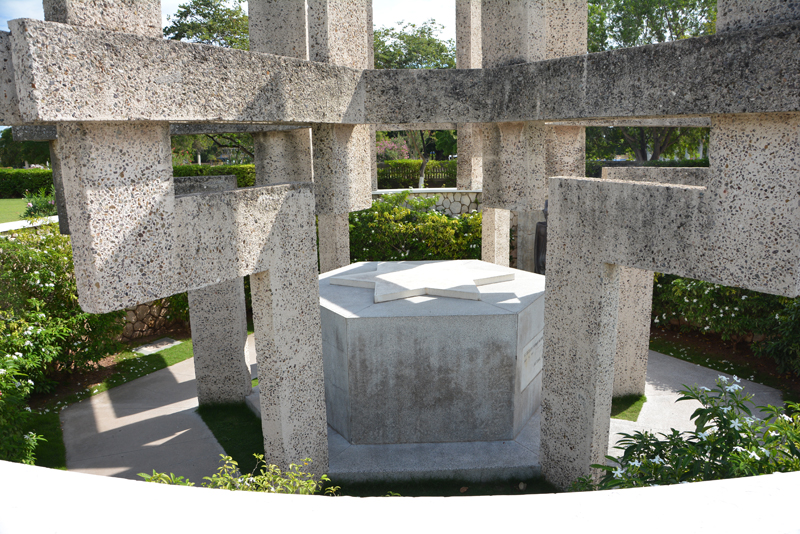
Sir Alexander Bustamante (1884-1977).
Bustamente travelled the world, returning to Jamaica in 1932. He became a leader in activism against colonial rule. During the 1938 labour rebellion, he became known as the spokesman for striking workers, who were mostly of African and mixed-race descent. In 1940, he was imprisoned on charges of subversive activities.
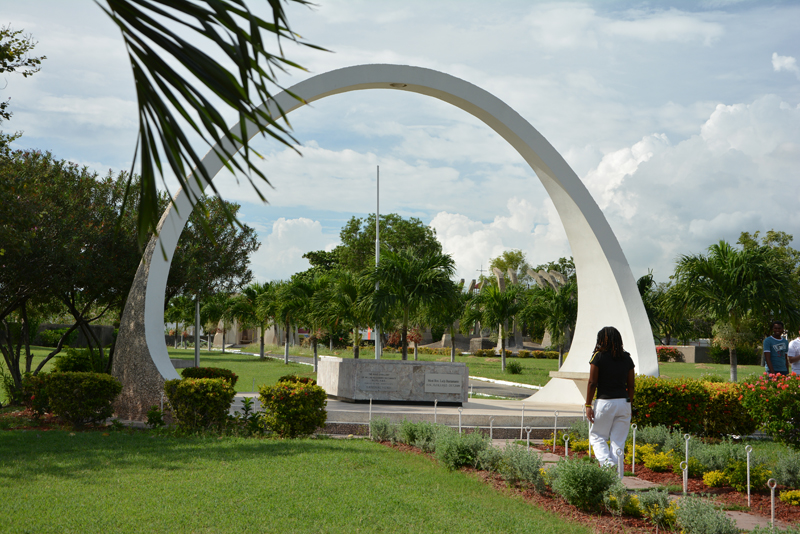
Universal suffrage was granted in 1944 with Bustamante released from prison the year before. He founded the Jamaica Labour Party. He became the unofficial government leader, representing his party as Minister for Communications, until the position of Chief Minister was created in 1953. He held this position until the JLP was defeated in 1954.
After independence in 1962 Bustamante served as the first Prime Minister until 1967. In 1965, after suffering a stroke, he withdrew from active participation in public life.
The last stop for the day was Devon House. We got there too late to have a tour through the house, but we did get ice cream.
Monday 5 December 2016
On Monday, on the way back from the Jamaican Archives I asked the taxi driver to drop me at Devon House. It was rush hour and the trip was talking too long. He was looking to pick up fares to return to Spanish Town, so didn’t want to hold him up longer as well. I hadn’t had anything to eat since breakfast and it was around 4:30pm so I stopped at Devon House and got a couple of Jamaican patties at the bakery. Yum! And, an icecream :o)
Tuesday 6 December 2016
The Morant Bay Exhibition was at the National Museum Jamaica, telling the story of the Morant Bay rebellion in October 1865.
Emancipation from slavery began in 1834. It wasn’t until 1838 that former slaves were free to choose their employment and employer. In theory these men could now vote, but in reality due to widespread poverty, were unable to pay the high poll tax in order to do so. This led to fewer than 2,000 black Jamaican men eligible to vote during the 1864 election from a population of 436,000. With the ratio of 32:1, the majority black population was woefully underrepresented.
By 1865 injustice and poverty was widespread with poor living conditions, crop damage from floods, a decade of cholera and smallpox outbreaks, and a two year drought. Exacerbated by bankruptcies in the sugar industry, finding work was difficult for many, leading to tensions between white farmers and freedmen with rumours running rife. There was a belief that white landowners wanted to restore slavery and the colonialist still remembering the widespread massacres and violence from the Haitian Revolution in 1804.
It was with this backdrop plus much more, that when a black man was put on trial for trespass on a long abandoned sugar plantation, tensions were high. A black spectator disrupted the trial and when police tried to remove him a fight broke out. Further warrants were issued. When hundreds marched to the courthouse a few days later armed with sticks and stones, they were met by officials and a volunteer militia, and gunfire, resulting in at least 25 deaths. For the next couple of days rioting occurred, with the courthouse and surrounding buildings destroyed.
The response from Governor John Eyre was swift and brutal. 439 black men, women and children were killed during this time, 354 were arrested and executed after hasty or no trials and approx. 600 were flogged, may of these killed or flogged had nothing to do with the rebellion at all.
One quote in the exhibition was from a woman who said she was walking down the road and said good morning to a white gentleman. He had her arrested and flogged. This boggles the mind, and was the point of my tour through the exhibition that I questioned how the oppression of a race can be viewed as the appropriate way to go. Governor Eyre did not handle this well.
If the name John Eyre means anything to you, it could be because Edward John Eyre explored large parts of Australia in 1839, particularly around South Australia. Mount Eyre and Lake Eyre are named after him. From 1848-1853 he was Lieutenant Governor of New Munster Province in New Zealand. From 1854 he was Governor of several Caribbean islands before taking on the role of Governor of Jamaica. Brutally suppressing this uprising had its supporters back in Britain, and his detractors and it surely tarnished his reputation.
Next stop was to the African Caribbean Institute of Jamaica, Jamaica Memory Bank. This was a relatively small display.
It was approaching lunch time, and there isn’t much around downtown, so I headed back to the National Gallery of Jamaica. After lunch I had a look in the gift shop and found three prints by Barrington Watson, including “Mother and Child.” Of course I purchased them!
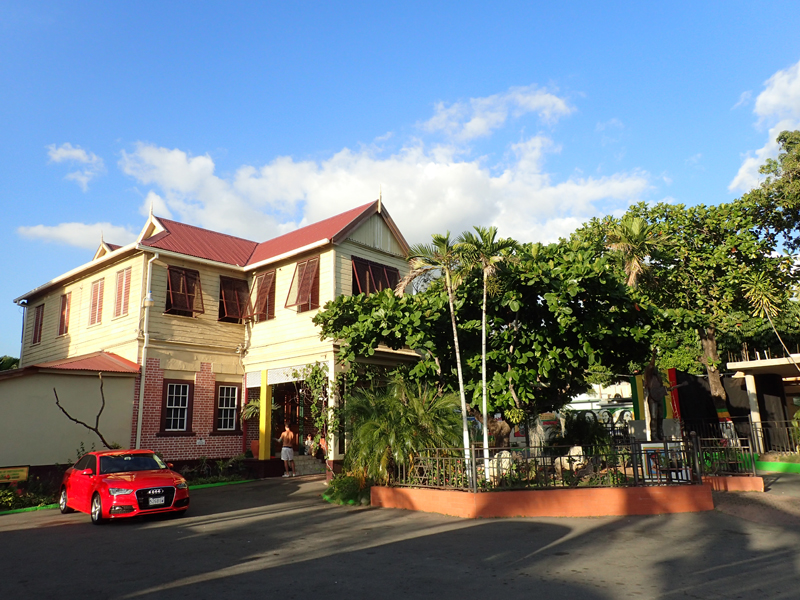
Next I ventured north to the Bob Marley Museum on Hope Road. I enjoy listening to BMW (Bob Marley and the Wailers) music but didn’t really know much about the man. I found it was like the cult of Bob Marley, with the Marley family fiercely protective of the brand. They are entitled to make a living from the fame, but there seems a feeling of exploitation to it all. I didn’t realise that although he was married to Rita, Marley followed the Rastafarian way of having many partners, and children from those relationships.

Photos are not allowed inside the museum, so I only have a few taken around the outside. The tour guides are interesting, telling stories of Bob Marley and the Wailers, including the 1976 assassination attempt, resulting in 4 people (including Marley) receiving injuries but amazingly no fatalities. This was seen as being politically motivated, even though Marley had remained neutral on the political divide and subsequent violence that was happening at the time. He had announced the Smile Jamaica Peace Concert to quell the violence, with the assassination attempt 2 days before the concert.
What I didn’t realise that it was the 40th anniversary of the Smile Jamaica Peace Concert was at the Bob Marley Museum just a few days prior to my visit, but I certainly heard it from where I was staying.
I finished up my day walking up the road to the supermarket then back to where I was staying.
Wednesday 7 December 2016 I headed back to Jamaican Archives in Spanish Town, returning around 5pm, stopping at the shops on Lady Musgrave Rd for dinner.
Thursday 8 December 2016
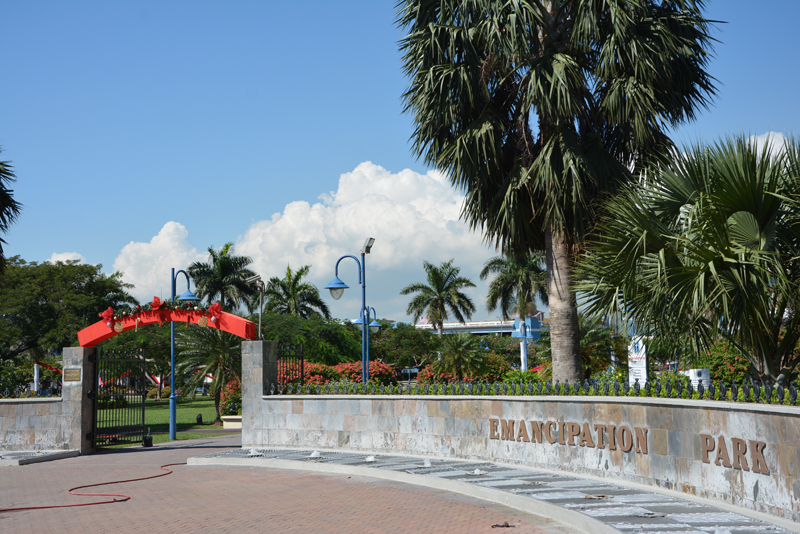
I walked to Emancipation Park. In 2002 Cabinet granted approval for the transfer of the land that became Emancipation Park to the National Housing Trust on the condition that a park was built and maintained at that location. The land was transferred for one Jamaican dollar.
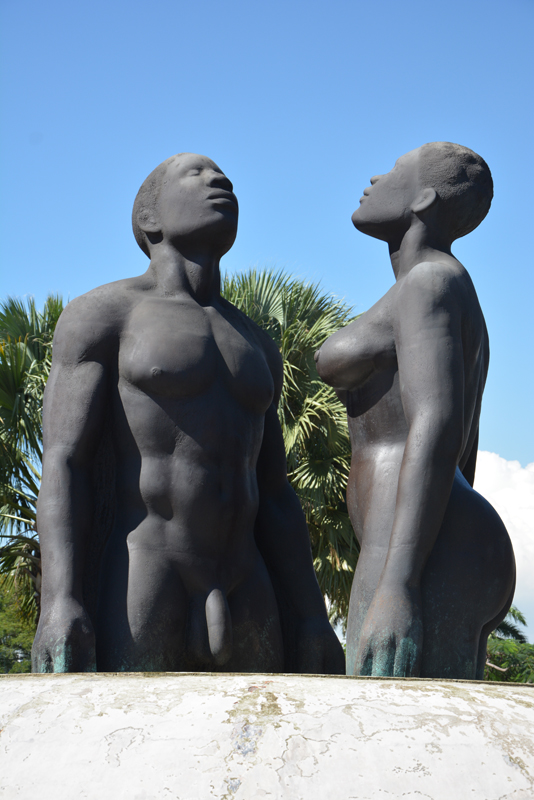
Redemption Song is a 3 metre high bronze sculpture at the entrance of the Park. Comprising of two naked figures gazing to the skies, it is symbolic of the triumphant rise from the horrors of slavery. I found the sculpture to be somewhat confronting because of its size, but I reasoned that since it was here, the locals didn’t have an issue with it, so shifted my focus to appreciate it. Little did I know that at the time it was installed in 2003, it caused quite a stir, both for and against it.

Devon House
After wandering around the park I headed off to Devon House.
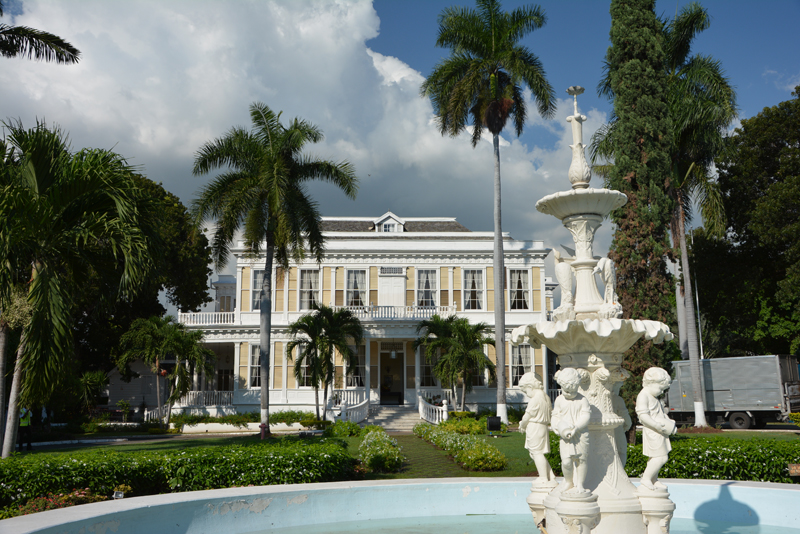
In the mid seventeenth century after Britain captured Jamaica from Spain, the British Government wanted to introduce religion to the people of Jamaica. Rev. John Zellers served the parish of St. Andrew. Devon Penn was part of the 600 acres awarded to him. A century later the Rectory was built on foundations now occupied by the Devon House Mansion.
Devon House was the architectural dream of Jamaica’s first black millionaire George Stiebel. In 1881 he commissioned the building, consisting of a library, gaming room, ballroom, sitting rooms, sewing room, dining room, and bedrooms. The kitchen was located towards the back away from the House.
He was one of three wealthy Jamaicans who constructed elaborate homes at the corner of Trafalgar and Hope Roads, becoming known as Millionaires Corner. Stiebel’s legacy lives on with Devon House becoming a national monument in 1990.
George Stiebel was a philanthropist, assisting the poor and disadvantaged, as well as exhibiting continuous interest in the socio-economic state of the country. Several civic authorities and local groups invited him to sit on their Boards including the Jamaica Permanent Benefit Society, the Jamaica Co-operative Fruit Insurance Company, the Board of Education and the Kingston and St. Andrew Union Poorhouse.
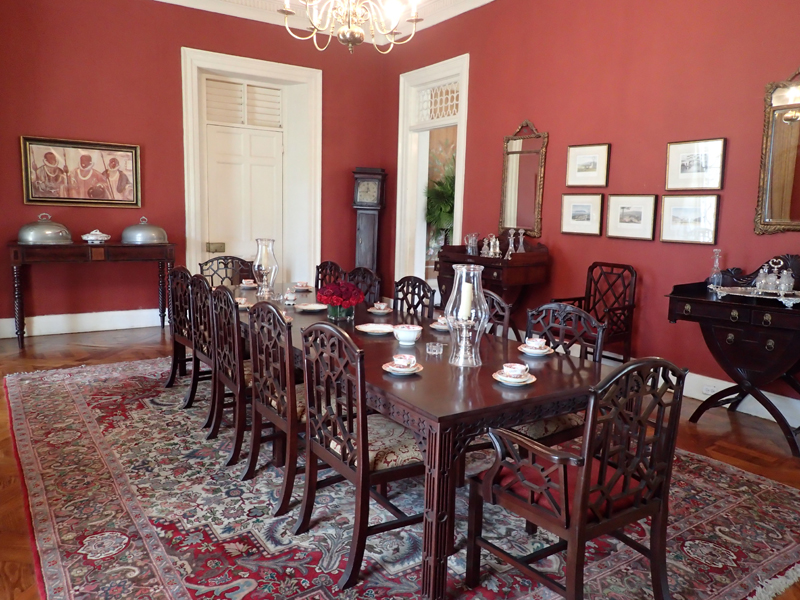
It is furnished with a collection of Jamaican, Caribbean, English and French antiques and Jamaican reproductions.
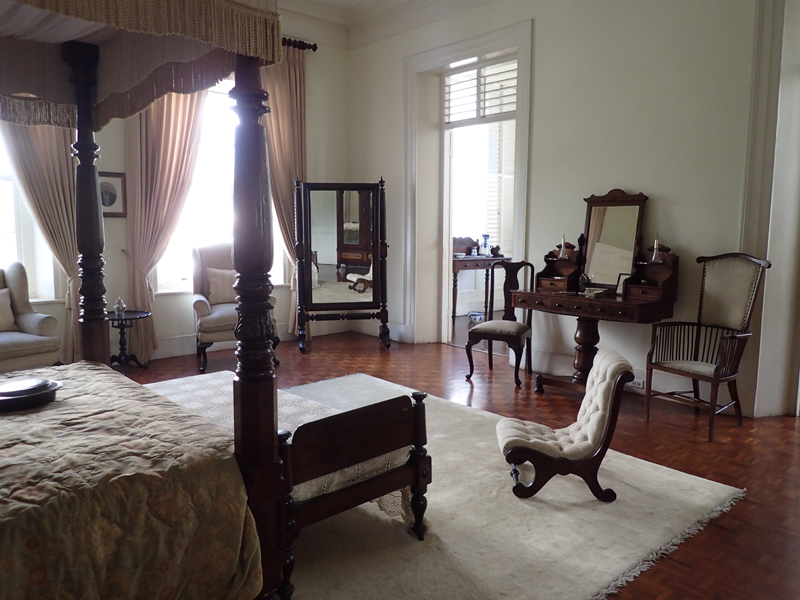
In the end I went there 3 times. The first for an ice cream; second for patties and ice cream; and the final time to go on the tour of the house… and ice cream. Yeah, the ice cream is that good!
My day’s journey ended by going to the post office and bank before heading back to my accommodation. I had walked in a large loop covering approx. 12 km.
Friday I took a day to relax as I was drained from the research and the long walk the day before. The Jamaican Archives are so cold. Staff there wear jackets, gloves, scarves etc. to keep warm. I had on warmer clothes than my first visit, but if I ever go back, I’ll wear much more.
During my stay, and particularly on this day, I wandered around Lorna’s beautiful garden taking photos. Please see the separate album of her garden.
Ochos Rios and Dunn River Falls
Saturday was a tour with Karen Hutchinson from Jamaica Cultural Enterprises to Ochos Rios and Dunn River Falls.
On this tour I met two lovely ladies from Trinidad and Tobago and together we walked up the Dunn’s River Falls. This is where a waterproof camera was invaluable.
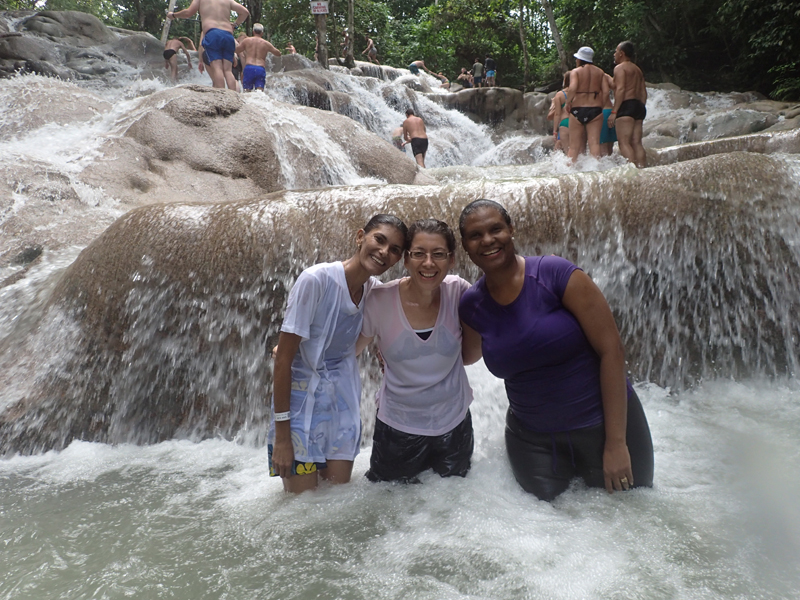
Dunn’s River is a short stream dropping only 55 metres from its source to the sea and is 180 metres long. It is fed by spring water rich with calcium carbonate and deposits travertine forming a sequence of tufa terraces. Geologists have described these waterfalls as “a living phenomenon” because they are continuously rebuilt by the sediments in the water.
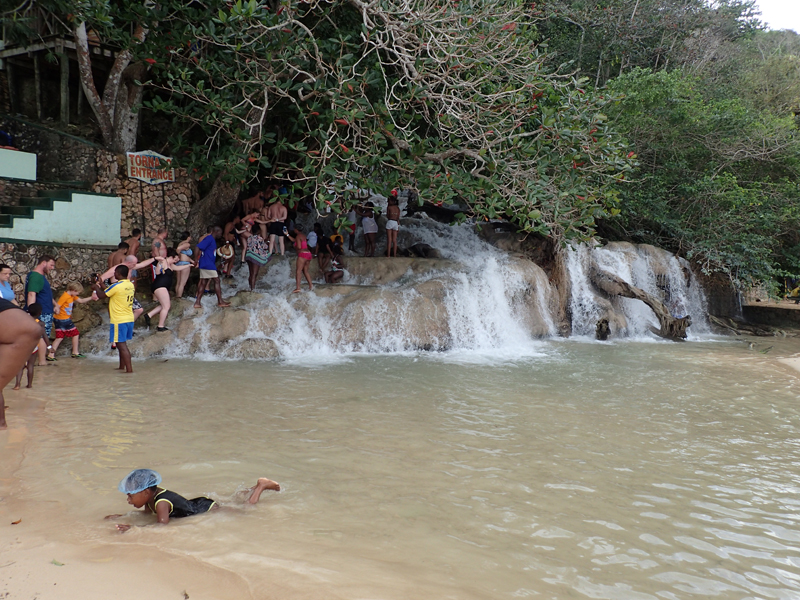
Dunn’s River Falls is one of the very few travertine waterfalls in the world that empties directly into the sea. Climbing the waterfalls is a popular tourist activity. The climb can be relatively hard, with climbers directed to hold the hands of the other people in their group, forming a human chain to ensure safety. Most groups have a guide to make sure they take the safest route. It takes about 1-1.5 hours to climb with short breaks for photographs and video recordings taken by the guides.
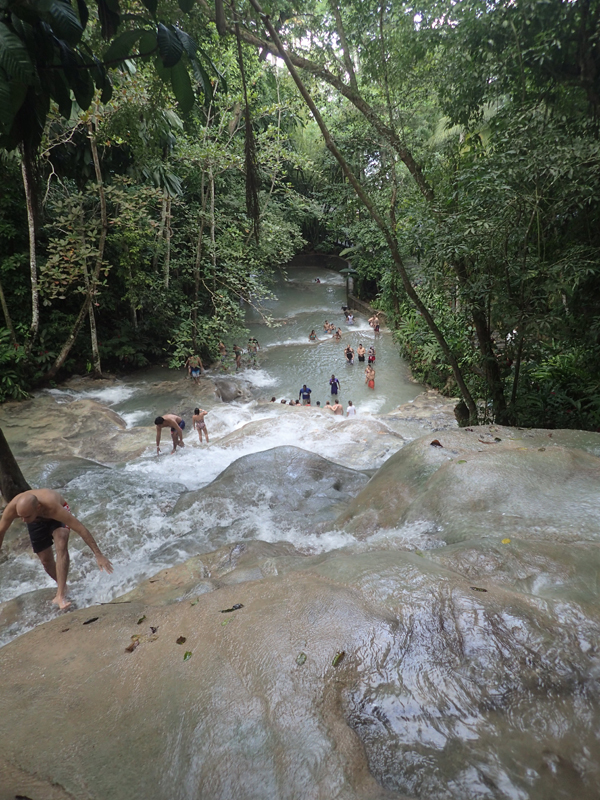
After the falls we went to the beach for lunch, before heading to the Jamaican Art Gallery where I purchased a print by Rani Carson and a woven bowl. We then headed back to Kingston.
Sunday 11 December I left Jamaica, hoping that some day I would be able to return. I stayed that night in Miami, doing a load of washing before the 6 hour flight the following day to San Francisco.


